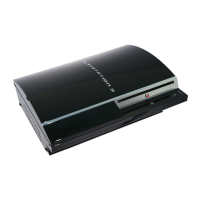
Do you have a question about the Sony 120GB Playstation 3 CECH-2001B and is the answer not in the manual?
| Model | CECH-2001B |
|---|---|
| Category | Game Console |
| Manufacturer | Sony |
| Storage Capacity | 120 GB |
| CPU | Cell Broadband Engine |
| GPU | RSX 'Reality Synthesizer' |
| RAM | 256 MB |
| VRAM | 256 MB |
| Maximum Resolution | 1080p |
| Connectivity | Ethernet, Wi-Fi |
| USB Ports | 2 |
| Video Output | HDMI, Component, Composite |
| Release Date | September 2009 |
| Backward Compatibility | No |
| Optical Drive | Blu-ray Disc |
| Audio Output | HDMI, Optical |
| Dimensions | 290mm x 65mm x 290mm |
| Power Consumption | 250 W |
| Included Accessories | Power Cable |
Avoid electrical shock; refer servicing to qualified personnel.
Improper use may cause radiation exposure; optical instruments increase eye hazard.
Equipment complies with FCC/IC RF exposure limits and is a Class 1 Laser Product.
Avoid flashing lights; consult physician if symptoms occur.
Stop use and consult physician for dizziness, altered vision, seizures etc.
Use in well-lit areas, take breaks, avoid fatigue to minimize risk.
Radio waves can affect devices; avoid use in restricted areas.
PS3™/PS® software compatible, PS2™ not. System software license terms.
Comply with U.S. export laws for software and system.
Follow electrical safety guidelines; inspect AC power cord regularly.
Use in well-lit areas, take breaks, keep away from children, avoid liquid.
Use correct cables, ensure connected devices are functional.
Avoid water, heat, dust, unstable surfaces, and electrical storms.
Stop if discomfort, avoid vibration with injuries, take breaks.
Ensure proper ventilation by keeping system away from walls and obstructions.
Use supplied cord, inspect for damage, plug in last.
Never disassemble or modify system; voids warranty.
Broadband required, dial-up not supported. Be aware of wireless interference.
Avoid condensation; disconnect power before cleaning.
Wipe with soft, dry cloth; avoid solvents.
Check media compatibility. Handle discs by edges, avoid surface contact.
Store discs to prevent warping; clean from center outwards.
Detailed PS3™ system software guide available online.
Website for the latest system software updates.
Official site for PS3™ product support, FAQs, and answers.
Select categories and items using directional buttons; confirm with X.
Explains key button functions for menu interaction.
How to display options menu and control panel using specific buttons.
Identifies front/rear ports (HDMI, USB, LAN) and indicators.
Details buttons, sticks, and connectors of the wireless controller.
Avoid dust, smoke, and moving powered system to prevent damage.
Connect via AV for SD or Component/HDMI for HD resolutions.
Steps for when no video is displayed; reset video output settings.
Information on HDMI, Component AV, S-Video, and Composite AV cables.
Use an Ethernet cable to connect to the Internet via the LAN connector.
Plug in AC power cord last, after all other connections are made.
Turn on TV and system, connect controller via USB, press PS button.
Follow prompts for language, time, user name, and internet settings.
Set up internet connection via Ethernet or wireless LAN.
Details HD (1080p, 1080i, 720p) and SD (480p, 480i) resolutions.
Examples showing the difference between HD and SD screen outputs.
Connect via HDMI or Component AV for HD resolutions.
Information on S-Video and composite AV cables and their supported modes.
Steps to reset video output if no image appears.
Select connector type, confirm settings, and choose resolutions.
Choose resolutions supported by your TV for optimal display.
Confirm accepted video output settings.
Select TV type for correct screen size display.
Configure audio output for connected TV or audio device.
Supported audio channels per output connector (HDMI, AV MULTI, Optical).
Illustrates connections via HDMI or optical digital cables.
Power button and PS button operation for on/off states.
Meaning of solid green, flashing green, and solid red indicators.
Pair controller with system via USB for first-time use.
Assign controller number via PS button each time system is powered on.
Use controller wirelessly after charging; check battery level via PS button.
Charge controller via USB cable while system is on.
Battery lifespan, degradation, and recommended annual charging.
Insert discs label-up; playback starts automatically or via XMB™.
Stop playback and press the eject button.
Connect USB device, select its icon in XMB™ to access content.
Lists supported formats like ATRAC™, MP3, AAC, JPEG, MPEG-4.
PS3™/PS® games compatible; PS2™ not.
Insert disc to start; use PS button and [Quit Game] to exit.
Adjust controller assignment and vibration function.
PS3™ data on hard disk; PS® data requires memory cards.
Create and assign slots for PS® format software memory cards.
Requires gateway, router, and Ethernet cable for wired connection.
Requires gateway and wireless router (access point) for wireless connection.
Connect Ethernet, select settings, choose [Easy], perform test.
Select [Wireless], choose [Easy], perform test.
Scan for or manually enter SSID. Use automatic setup if available.
Enter encryption key (WEP, WPA-PSK/WPA2-PSK) for secure connection.
Configure Ethernet mode, IP (Auto/Manual/PPPoE), DHCP host name.
Configure DNS server, MTU, Proxy Server, and UPnP.
Access browser via Network menu; basic operations provided.
View detailed system software guide via provided URL.
Sign up for PSN for communication and Store access.
Update via Internet, storage media, or game disc.
Download from Internet or use USB drive for updates.
View current version in System Information.
Overview of keyboard layout, entry field, and predictive options.
Step-by-step guide for typing text using the keyboard.
Set parental levels for games/content; change default password.
Correlates ESRB rating symbols with parental control levels.
Control BD, DVD playback and Internet Browser access.
Safety guidelines before removing or handling the hard disk.
Regular backups prevent data loss; SCEA not liable for loss.
Back up data to USB mass storage devices using utility or selective copy.
Restore data in single operation or selectively copy files.
Steps to safely turn off, unplug, and remove the hard disk.
Remove screw cover and HDD bay cover to access the hard disk.
Handle carefully to prevent drops, shock, static, and magnetic fields.
Place new disk, secure with screws, and install in HDD bay.
System software must be reinstalled after hard disk replacement.
Lists compatible hard disk types: 2.5" Serial ATA.
Reinstall using update data from PC or game discs.
Download updates from the PlayStation website.
Restore data using backup utility or by copying/moving files.
Restore all backed-up data using the backup utility.
Restore specific files from a USB storage device.
Reset system to defaults, requiring initial setup.
Delete all data and format HDD for disposal or transfer.
Check AC power cord insertion if system does not power on.
Check cables, input, and reset video settings if screen is blank.
Troubleshoot disc region codes, parental controls, and DVD finalization.
Ensure TV and system video output settings match.
Check mute, volume, AV cable, and audio settings for no sound.
Troubleshoot connection errors, DNS issues, and router configuration.
Resolve IP timeouts, PPPoE errors, and web page display problems.
Troubleshoot discs not recognized or that cannot be removed.
Address issues with USB devices not recognized or functioning improperly.
Check pairing, battery charge, and reset controller for non-functionality.
Reset controller for abnormal behavior; check vibration support.
Troubleshoot charging, short battery life, and charge loss over time.
Address fan noise and heat buildup; ensure proper ventilation.
Reset password to default; system warmth is normal.
Troubleshoot frozen screens, system non-operation, and flashing indicator lights.
Ensure content format is supported by the system.
Details on CPU, GPU, Memory, and Operating Temperature.
Hard disk size, USB ports, Ethernet, Wi-Fi, Bluetooth, AV outputs.
Disc drive read rates and controller specifications.
Details of included AV and USB cables with part numbers.
Functionality for controlling connected devices via HDMI.
Lists compatible Blu-ray, DVD, and CD formats.
Explains region codes for BD, DVD, and PS3™ software playback.
Notes on NTSC standard, HD resolution, and DVD finalization.
Warnings about disc shape, damage, copyright protection, and media compatibility.
Safety warnings for battery leaks and temperature exposure.
Battery lifespan, degradation, and recommended annual charging.
Safety precautions for removing battery screws and casing.
Steps to remove controller casing to access the battery.
Disconnect battery connector, remove battery, and recycle.
One-year warranty; remedy is repair or replacement.
Conditions voiding warranty (misuse, alteration, unauthorized products).
Implied warranties disclaimed; liability limited to repair/replacement.
Services may alter settings or cause data loss; user must back up.
SCEA reserves right to refuse service for modified systems.
Lists registered trademarks of Sony Computer Entertainment Inc.
Mentions Adobe Flash, Macromedia, All Media Guide, Bluetooth.
Mentions DivX, Dolby, DLNA, DTS, HDMI, ATOK.
Details licensing for DivX, Dolby, and DLNA technologies.
Details licensing for DTS, DTS-HD, and HDMI technologies.
Use of Macrovision copyright protection technology; reverse engineering prohibited.
Acknowledgement of Java technology and Sun Microsystems software.
Mentions RSA BSAFE and S3TC texture compression technology.
Mentions eZiText and Zi registered trademarks.
Acknowledgement of FreeType Project and Independent JPEG Group work.
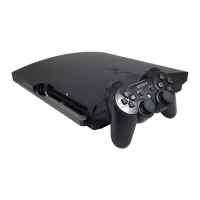


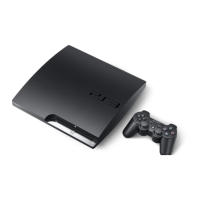
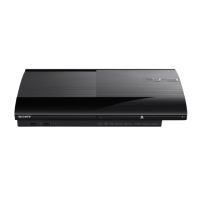
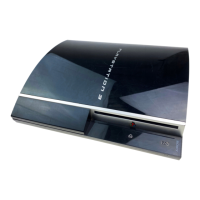
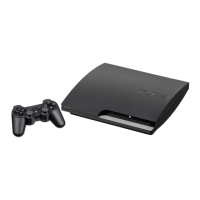
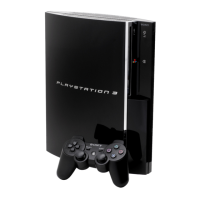


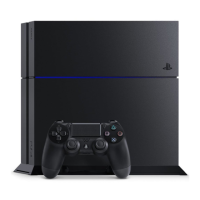

